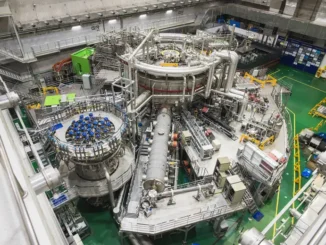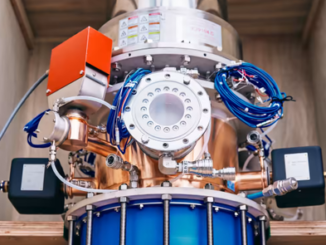
Pulsar Fusion, a UK-based space firm, is building a nuclear fusion-based rocket engine that could exceed temperatures on the Sun. The construction of the largest-ever fusion rocket engine has begun, and its exhaust speeds could exceed 500,000 miles per hour.
Nuclear fusion has long been proposed to answer our energy and climate change woes as it promises a cleaner power source. Inspired by the Sun, scientists have been working to build nuclear fusion reactors and have succeeded in generating record-high temperatures but not more energy than they have put in.
However, Richard Dinan, the founder, and CEO of Pulsar Fusion, is confident that nuclear fusion will propel spacecraft long before it powers devices on Earth. His company has been working with the UK Space Agency to build a fusion-based rocket engine that will surpass the temperatures of the Sun when it gets to work.
The Direct Fusion Drive
Pulsar Fusion is working on the Direct Fusion Drive (DFD), which aims to generate thrust directly from nuclear fusion rather than using an intermediary step such as producing electricity.
In Pulsar’s DFD, the reactor generates energy creating a plasma of electrically charged particles which then uses a rotating magnetic field to generate thrust, where particles from the exhaust will escape at speeds of 500,000 miles an hour.
While this is hypothetical for now, it opens up the possibility of exploring areas outside the solar system since reaching Pluto will take four to five years with the DFD, unlike a decade required now. Saturn’s moon, Titan, will be just two years away.
Using AI to learn more
The key to generating energy through fusion is sustained heat, and with the DFD, Pulsar Fusion is expected to create a source hotter than the Sun. But confining this hot plasma is also a challenge, and the company is teaming up with Princeton Satellite Systems (PSS), an aerospace research and development company to use artificial intelligence and machine learning to study the data from the Princeton field-reverse configuration (PFRC-2) reactor.
The collaboration is looking to develop simulations of the basis of the reactor’s gas puffing data, which will help them predict ion and electron behavior. Accurate simulations are needed to create a closed-loop reactor that could one day propel a rocket.
This is easier said than done since plasma has been notoriously difficult to predict using conventional techniques. Sometimes, even after reaching millions of degrees of temperature, the reaction stops.
The study will also help the researchers understand the behavior of plasma under electromagnetic heating and confinement. This will determine how the plasma particles will exit the rocket engine and if they can deliver the high speed of space travel that is possible in theory.
“Humanity has a huge need for faster propulsion in our growing space economy, and fusion offers 1,000 times the power of the conventional ion thrusters currently used in orbit,” Dinan said in a press release. “In short, if humans can achieve fusion for energy, then fusion propulsion in space is inevitable.”



